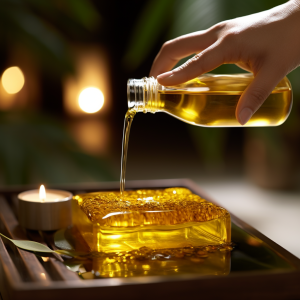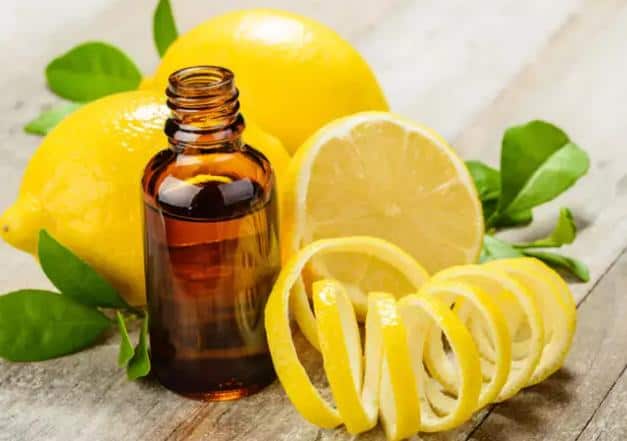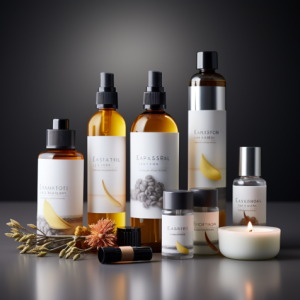In today’s fast-paced world, finding time to unwind and indulge in self-care is crucial for maintaining overall well-being. Amidst the hustle and bustle of modern life, it’s easy to overlook the importance of taking a moment to rejuvenate and recharge. One way to incorporate relaxation into your routine is by creating your own DIY massage oil. This personalized blend allows you to harness the power of nature’s finest ingredients, tailored to your unique skin type and preferences.
The Art of Self-Care
Self-care is not merely a luxury; it’s a necessity for maintaining a healthy mind, body, and spirit. By taking the time to nurture yourself, you’re investing in your overall well-being. DIY massage oils offer a profound connection to this practice, allowing you to create a custom blend that resonates with your senses and promotes a state of tranquility.
Benefits of DIY Massage Oils
Creating your own massage oil has numerous benefits that extend beyond the physical realm. Not only does it provide a soothing and nourishing experience for your skin, but it also offers a therapeutic escape from the stresses of daily life. Here are some of the key advantages of crafting your own massage oil blend:
- Personalization: By selecting your own ingredients, you can tailor the blend to suit your unique preferences, skin type, and desired aromatherapy experience.
- Natural and Organic: DIY massage oils allow you to embrace the power of nature, utilizing pure and organic ingredients free from harsh chemicals or artificial fragrances.
- Cost-effective: Compared to store-bought massage oils, making your own can be a more economical option, especially when you consider the long-term savings.
- Mindful Practice: The process of creating your massage oil can be a mindful and therapeutic experience, encouraging you to slow down and connect with the present moment.
- Customizable Scents: Essential oils offer a vast array of scents, allowing you to create a unique aroma profile that resonates with your senses and enhances your relaxation experience.
What is DIY Massage Oil?
DIY massage oil is a homemade blend of essential oils and carrier oils, meticulously crafted to enhance your relaxation experience. By making your own massage oil, you have the freedom to tailor the blend to suit your specific needs and preferences. Natural ingredients like lavender, chamomile, or eucalyptus can be incorporated for their calming effects, while carrier oils like coconut or almond oil provide a nourishing base.
The process of creating a homemade blend involves mixing the essential oils with a carrier oil in a designated container, allowing the scents to meld together for a harmonious aroma. The therapeutic benefits go beyond just relaxation, offering a form of self-care that can uplift your mood and support overall well-being.
Customization and Personalization
One of the key advantages of DIY massage oils is the ability to customize and personalize the blend to suit your unique preferences and needs. By carefully selecting the carrier oils and essential oils, you can create a blend that not only nourishes your skin but also caters to your desired aromatherapy experience.
Skin Type Considerations
When crafting your DIY massage oil, it’s essential to consider your skin type. Different carrier oils offer varying benefits for dry, oily, sensitive, or combination skin. For instance, nourishing oils like almond or coconut oil are excellent choices for dry skin, while lighter options like jojoba or grapeseed oil are better suited for oily complexions. Those with sensitive skin may benefit from gentle carriers like apricot kernel or sunflower oil.
Aromatherapy Preferences
Essential oils play a crucial role in the aromatherapy experience offered by DIY massage oils. Each essential oil possesses unique therapeutic properties and scents. Lavender, for example, is widely renowned for its calming and relaxing aroma, while peppermint offers an invigorating and refreshing sensation. By carefully selecting the essential oils, you can create a blend that not only soothes the body but also uplifts the mind and soul.

Key Ingredients
DIY massage oils are crafted from two primary components: carrier oils and essential oils. Each ingredient plays a vital role in creating a nourishing and therapeutic blend.
Carrier Oils
Carrier oils form the base of DIY massage oils and are selected based on their ability to nourish and hydrate different skin types. These oils act as a vehicle for the essential oils, allowing them to be diluted and safely applied to the skin.
Dry Skin
For dry skin, nourishing oils like almond, jojoba, and coconut oil are excellent choices. Almond oil, rich in Vitamin E and fatty acids, deeply hydrates and improves skin elasticity. Jojoba oil closely resembles the skin’s natural oils, regulating moisture levels. Coconut oil’s antibacterial and anti-inflammatory properties soothe and moisturize dry, irritated skin.
Oily Skin
Oily skin benefits from lighter oils like jojoba, grapeseed, and tea tree oil. These non-comedogenic options help balance sebum production without clogging pores. Jojoba oil regulates oil production, while grapeseed oil provides lightweight moisture. Tea tree oil’s antibacterial properties combat acne and blemishes.
Sensitive Skin
For sensitive skin, gentle carrier oils like almond, apricot kernel, and sunflower oil are ideal. These mild oils nourish without causing irritation. Almond oil’s emollient properties hydrate and calm, while apricot kernel oil is rich in vitamins and antioxidants. Sunflower oil’s lightweight texture absorbs easily, providing essential fatty acids.
Combination Skin
Versatile oils like jojoba, argan, and rosehip oil are well-suited for combination skin. Jojoba oil balances moisture levels, while argan oil provides deep hydration without clogging pores. Rosehip oil’s skin-renewing benefits reduce inflammation and even out skin tone.
Essential Oils
Essential oils are the aromatic and therapeutic powerhouses in DIY massage oils. These concentrated plant extracts offer a multitude of benefits, ranging from calming effects to energizing properties.
Lavender Oil
Lavender oil is renowned for its relaxation benefits, calming effects, and stress-relief qualities. Its gentle floral scent creates a serene atmosphere during massages, promoting inner peace and wellness.
Peppermint Oil
Peppermint oil provides an invigorating and refreshing experience. Its cooling sensation and minty aroma awaken the senses, alleviate muscle tension, and promote mental clarity.
Eucalyptus Oil
Eucalyptus oil offers respiratory benefits and a refreshing, rejuvenating aroma. It helps clear sinuses, providing a cleansing and revitalizing massage experience.
Rosemary Oil
Rosemary oil’s herbaceous fragrance enhances mental clarity and promotes circulation. Its revitalizing properties relieve muscle tension and soreness, making it perfect for an invigorating massage.
Choosing the Right Oils
Selecting the appropriate oils is crucial in creating a well-balanced and effective DIY massage oil blend. Here are some guidelines to help you make the right choices.
Selecting Carrier Oils for Your Skin Type
When selecting a carrier oil, consider your skin type and desired outcome. Sweet almond oil is a versatile option suitable for most skin types, while coconut oil provides nourishment and jojoba oil is ideal for sensitive skin.
- Dry Skin: Opt for rich, nourishing oils like avocado, sweet almond, or olive oil.
- Oily Skin: Choose lighter options like jojoba or grapeseed oil to balance sebum production.
- Sensitive Skin: Gentle oils like apricot kernel or calendula oil can soothe and calm irritation.
- Combination Skin: Versatile oils like argan or rosehip seed oil offer hydration without clogging pores.
Popular Essential Oils for Massage
When it comes to essential oils, consider their therapeutic properties and desired effects. Popular choices include:
- Relaxation: Lavender, chamomile, ylang-ylang
- Invigorating: Peppermint, rosemary, lemongrass
- Respiratory: Eucalyptus, tea tree, pine
- Muscle Relief: Marjoram, ginger, clary sage
The DIY Process
Creating your own DIY massage oil is a simple yet rewarding process. By following these steps, you can craft a personalized blend that meets your unique needs and preferences.
Selecting the Perfect Combination
- Choose a Carrier Oil: Start by selecting a carrier oil that suits your skin type and desired outcome. Consider factors like nourishment, hydration, and absorption.
- Pick Essential Oils: Next, choose essential oils based on their therapeutic properties and desired effects. Consider relaxation, invigorating, respiratory, or muscle relief properties.
- Determine Proportions: As a general guideline, use 15-30 drops of essential oils per 2 ounces of carrier oil. Adjust the ratios according to your preferences and desired aroma intensity.
Mixing the Oils
- Gather Supplies: Assemble your chosen carrier oil, essential oils, a clean glass bottle or container, and a small funnel (optional).
- Pour the Carrier Oil: Using the funnel (if desired), pour the carrier oil into the glass bottle or container.
- Add Essential Oils: Carefully add the desired number of drops of each essential oil to the carrier oil. Be mindful of the potency and desired aroma intensity.
- Blend the Oils: Gently swirl or roll the container to thoroughly blend the oils together. Avoid shaking vigorously to prevent air bubbles from forming.
- Label and Date: Once blended, clearly label the container with the oil blend and the date of creation.
Storing Your Massage Oil
Proper storage is essential to maintain the integrity and longevity of your DIY massage oil blend. Here are some tips:
- Use Dark Glass Containers: Dark glass bottles or containers help protect the oils from UV light, which can degrade their properties over time.
- Store in a Cool, Dark Place: Exposure to heat and light can accelerate the degradation of the oils. Keep your massage oil in a cool, dark area, such as a cupboard or drawer.
- Check for Spoilage: Periodically check the aroma and appearance of your massage oil for signs of spoilage or rancidity.
Indulge in Self-Care
Creating your own DIY massage oil is a therapeutic and personalized experience that allows you to indulge in self-care while harnessing the power of nature’s finest ingredients. Embrace the calming aromas and nourishing properties of your homemade blend, and let the relaxation soothe your mind, body, and soul.
As you embark on this journey of crafting your own massage oil, remember to savor the process. Take the time to mindfully select each ingredient, blend the oils with intention, and create a sacred space for your self-care rituals. By incorporating DIY massage oils into your routine, you not only nourish your physical self but also cultivate a deeper connection with your inner well-being.
So, why not treat yourself to the gift of relaxation? Gather your supplies, explore the world of natural ingredients, and let your senses guide you toward a personalized blend that resonates with your unique needs. Embrace the art of self-care, and let the healing power of DIY massage oils transport you to a state of tranquility and rejuvenation.

FAQ’s on Homemade DIY Massage Oils and Their Benefits
- What are the benefits of using homemade massage oils?
Homemade massage oils offer several advantages over commercial products. They are free from synthetic fragrances, preservatives, and other harmful chemicals, making them a safer and more natural option. Additionally, you can customize the oils to suit your specific needs and preferences by choosing the carrier oils and essential oils that align with your desired aromatherapy benefits.
- What are the most commonly used carrier oils for massage?
Some of the most popular carrier oils for massage include sweet almond oil, grapeseed oil, jojoba oil, and coconut oil. These oils are readily available, have a pleasant texture, and are easily absorbed into the skin without leaving a greasy residue.
- How do I choose the right essential oils for my massage blend?
The choice of essential oils depends on your desired therapeutic effects. For example, lavender and chamomile are known for their calming properties, while peppermint and eucalyptus can provide a refreshing and invigorating experience. Research the properties of different essential oils and choose those that align with your goals.
- Can homemade massage oils be used for specific conditions?
Yes, by carefully selecting the essential oils, you can create massage blends that may help alleviate specific conditions or concerns. For instance, a blend with ginger and rosemary oils can be beneficial for muscle pain, while a blend with tea tree and lemon oils may help with skin issues.
- How long do homemade massage oils last?
The shelf life of homemade massage oils can vary depending on the ingredients used and storage conditions. Generally, they can last for several months to a year when stored in a cool, dark place and in an airtight container.
- Can I use homemade massage oils during pregnancy?
While some essential oils are considered safe for use during pregnancy, it’s essential to consult with a healthcare professional before using any homemade massage oils. Certain essential oils should be avoided during pregnancy due to their potential effects on the developing fetus.
- How much essential oil should I use in my massage blend?
The general rule of thumb is to use about 10-15 drops of essential oil per ounce of carrier oil. However, it’s best to start with a lower concentration and gradually increase it if needed, as essential oils can be potent and may cause skin irritation if used in excess.
- Can I use homemade massage oils for other purposes?
Absolutely! Homemade massage oils can also be used for aromatherapy purposes, added to bathwater for a luxurious soak, or used as a moisturizer for the skin and hair.
- What precautions should I take when using homemade massage oils?
Always perform a patch test before using a new massage oil blend to check for any potential allergic reactions. Additionally, avoid using essential oils on infants, young children, and individuals with certain medical conditions without consulting a healthcare professional.
- Where can I find recipes for homemade massage oils?
There are numerous resources available online and in books that provide recipes and guidance for creating your own homemade massage oils. Look for reputable sources and follow the instructions carefully to ensure the safety and effectiveness of your massage oil blends.





